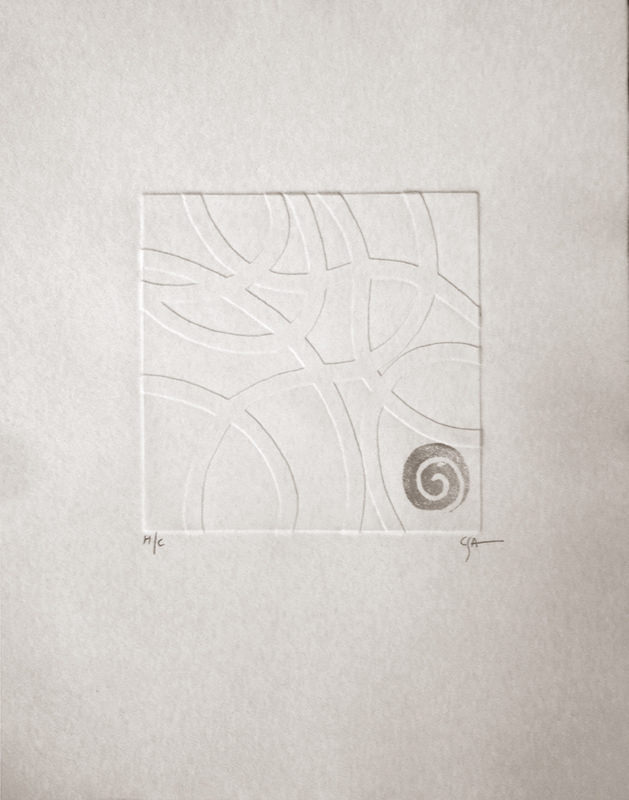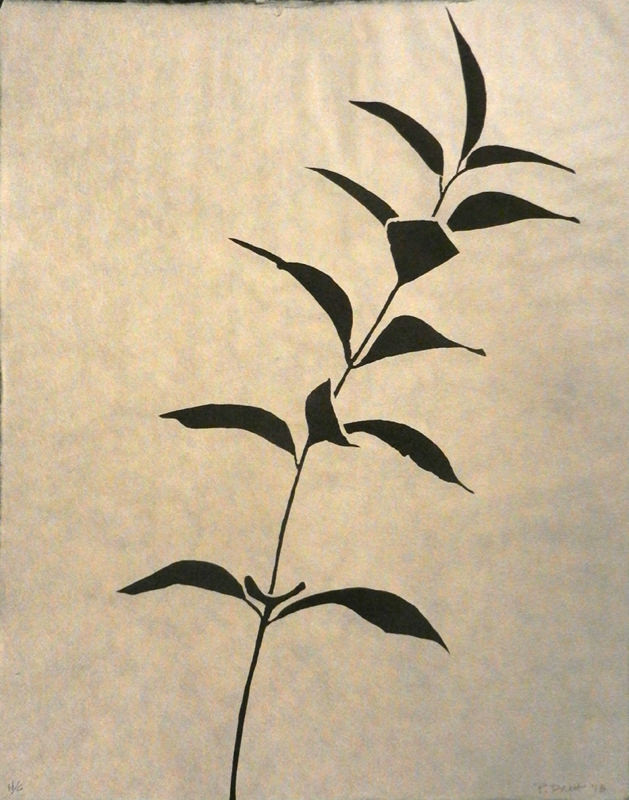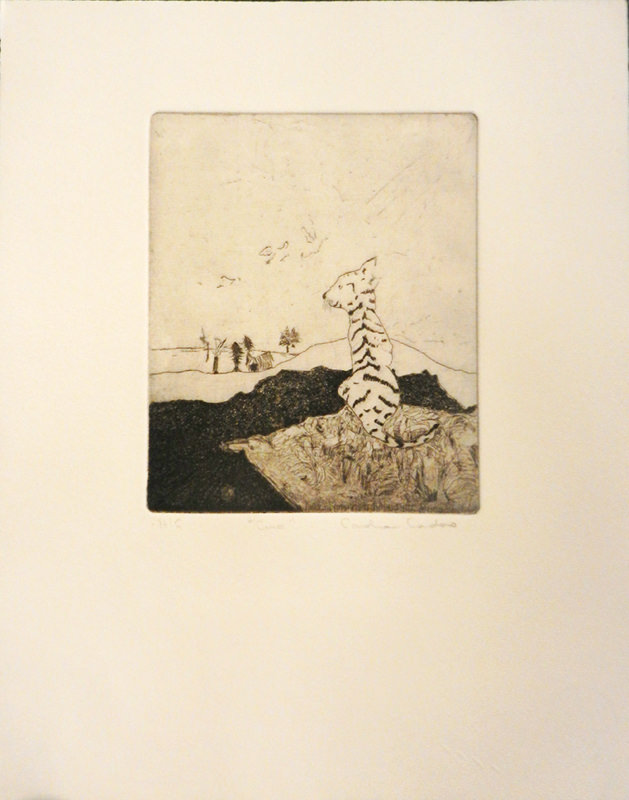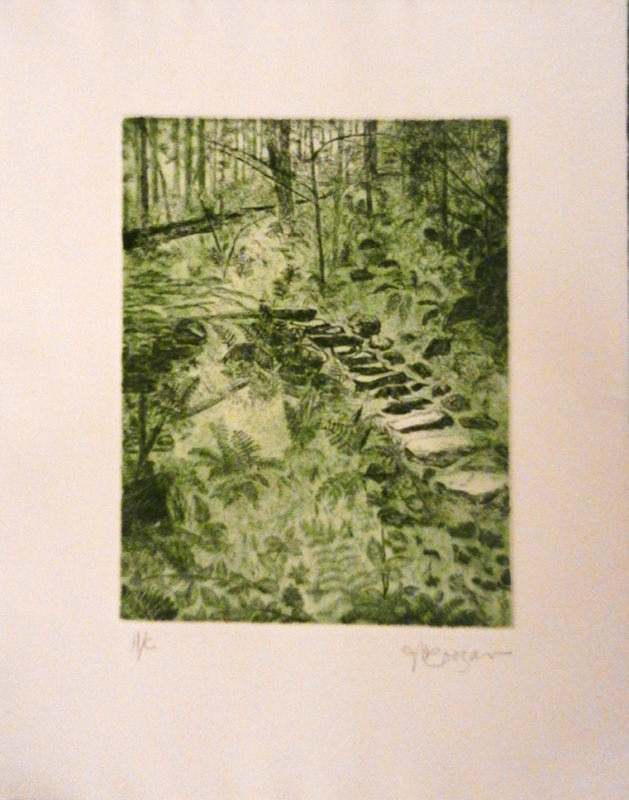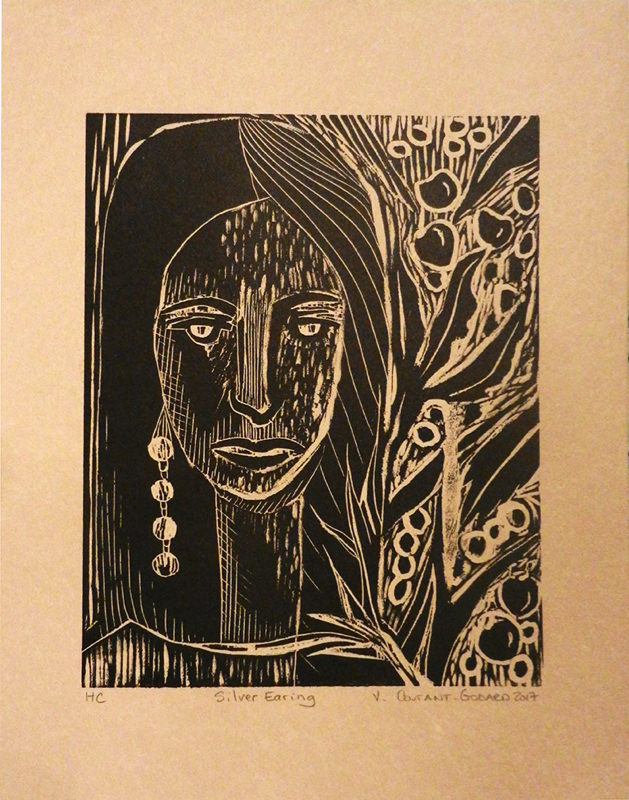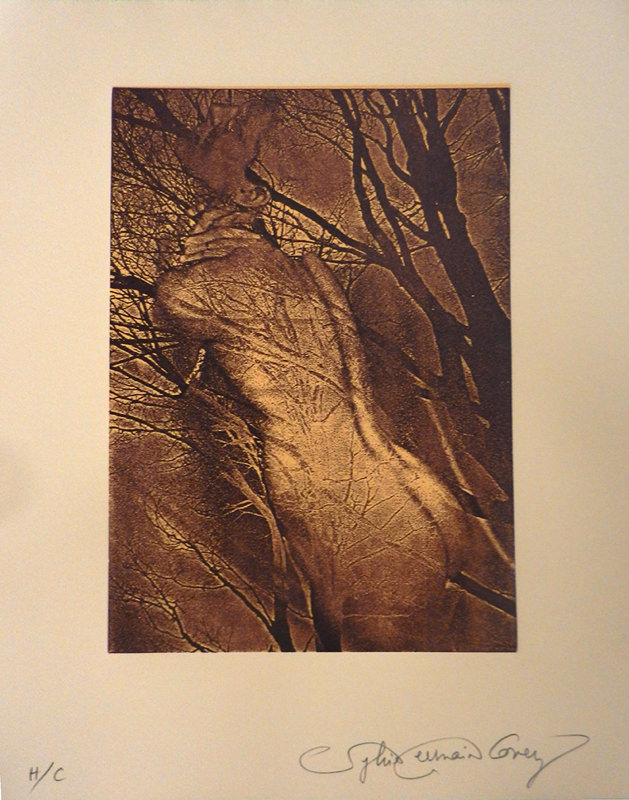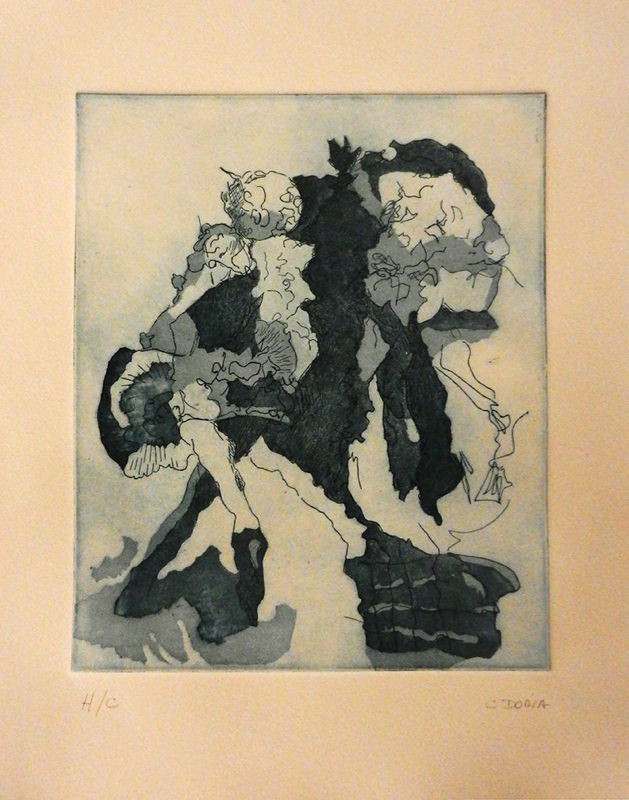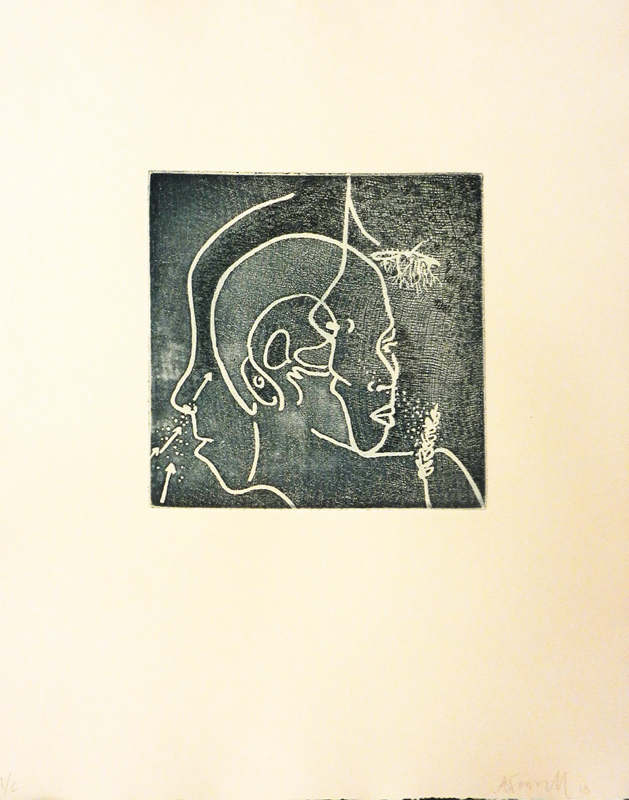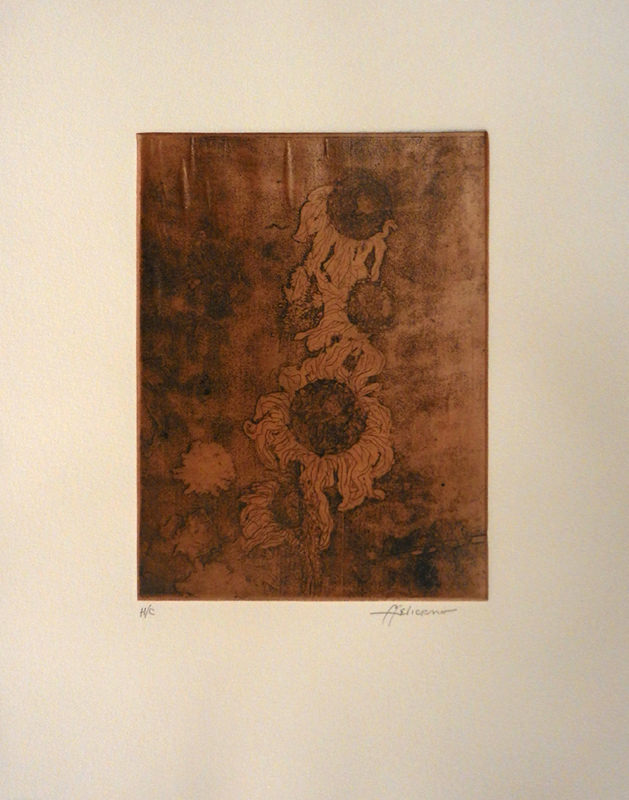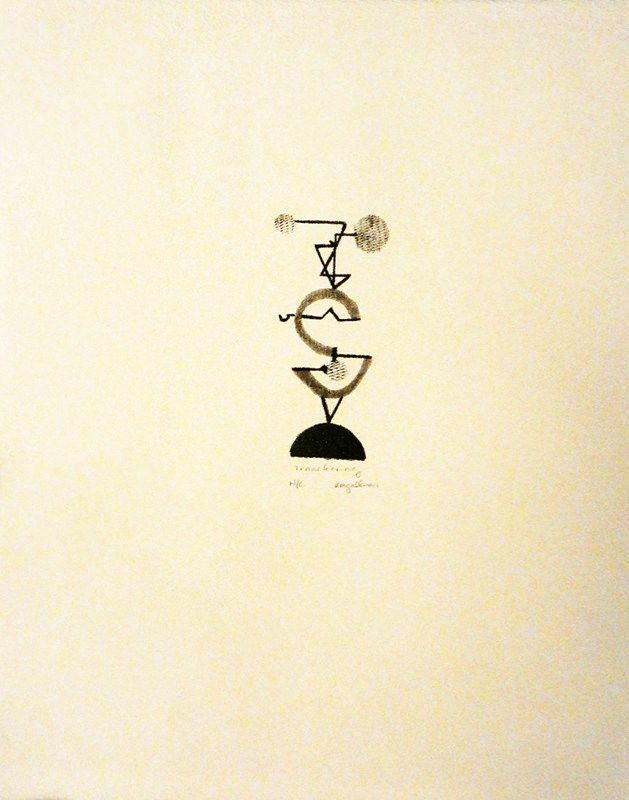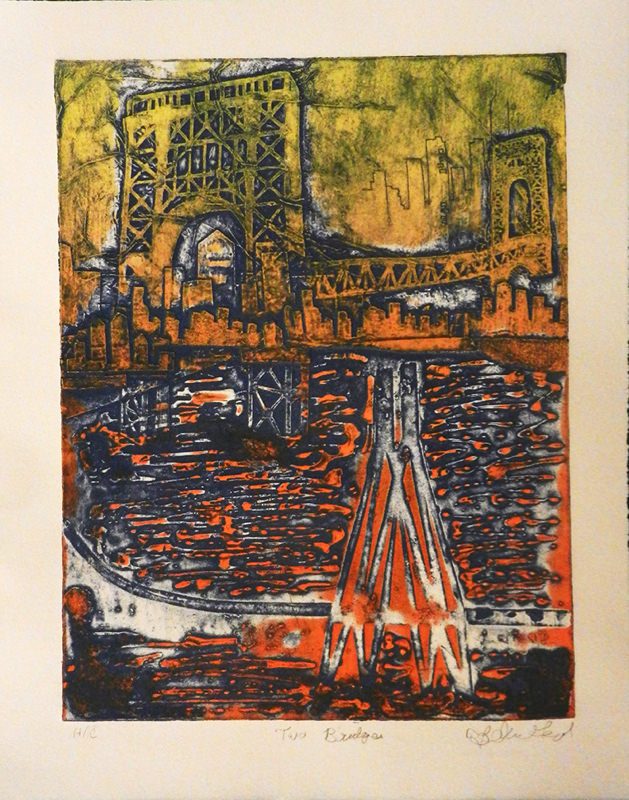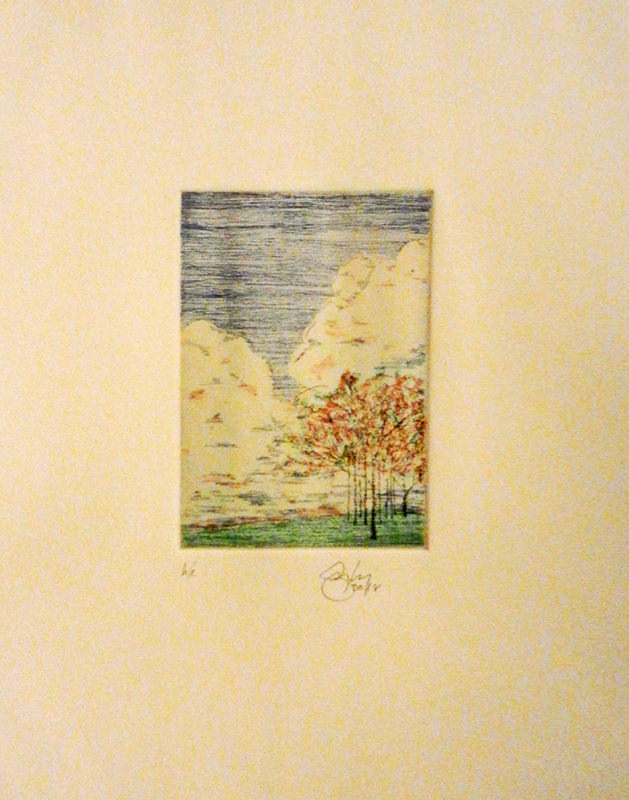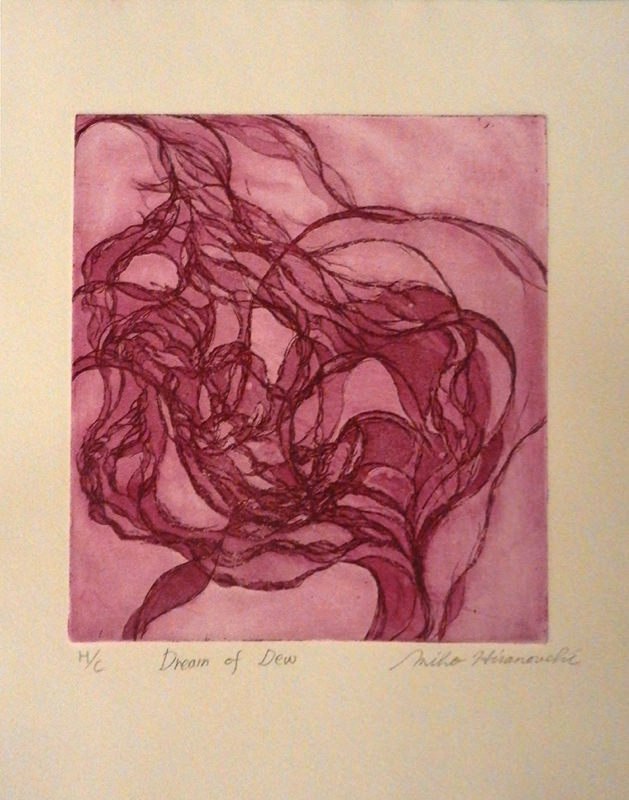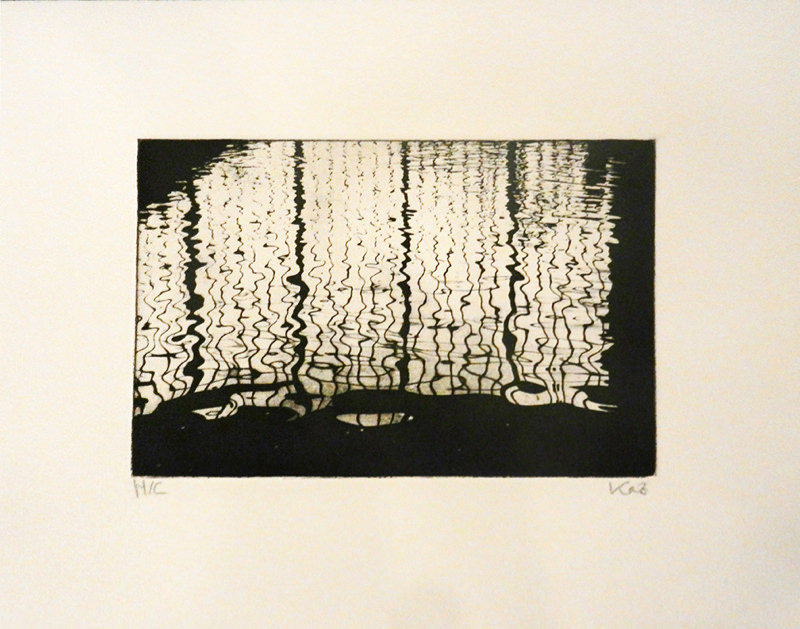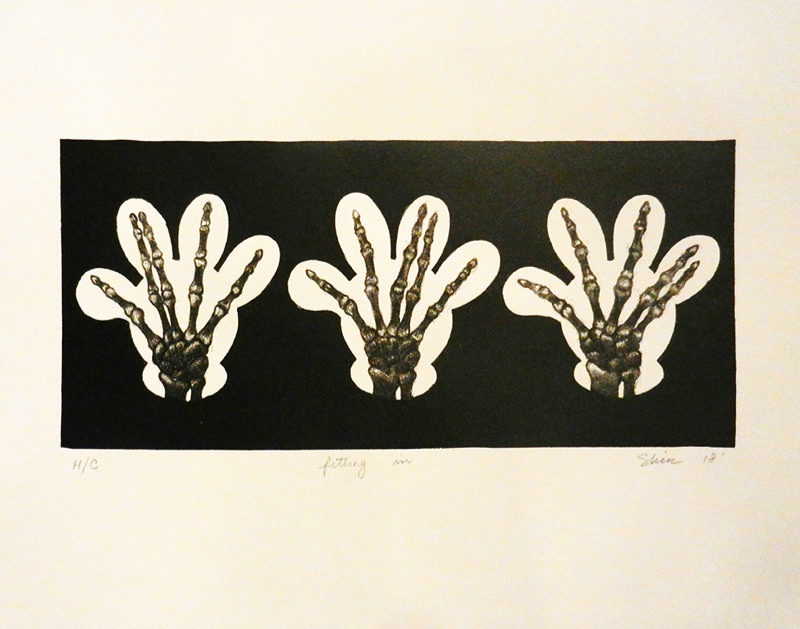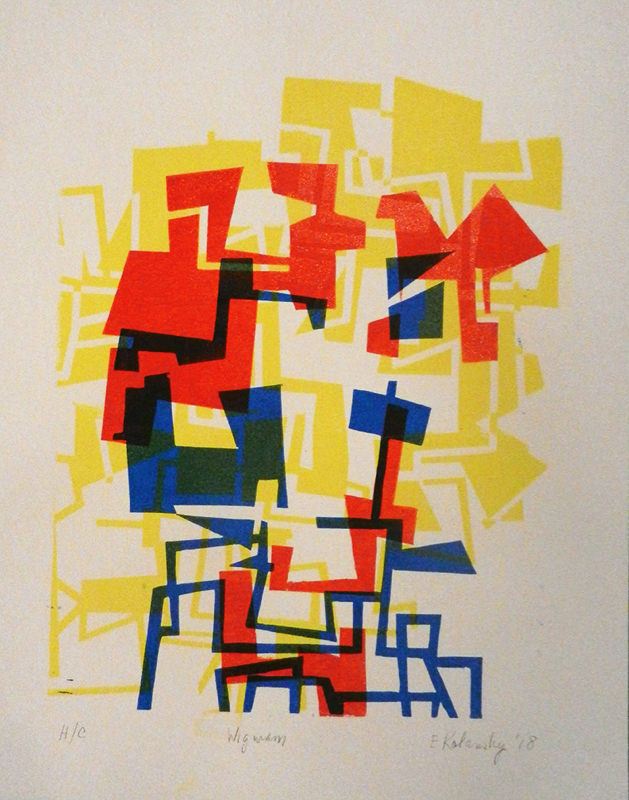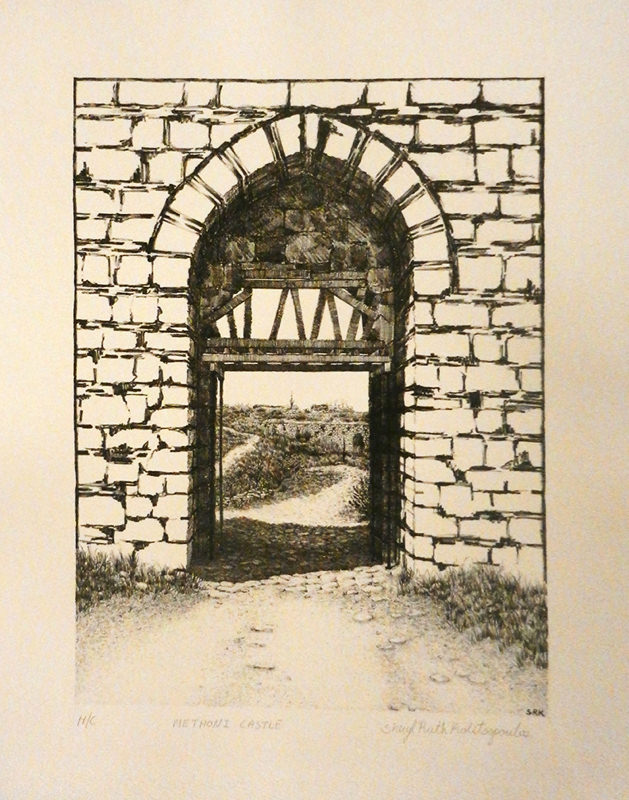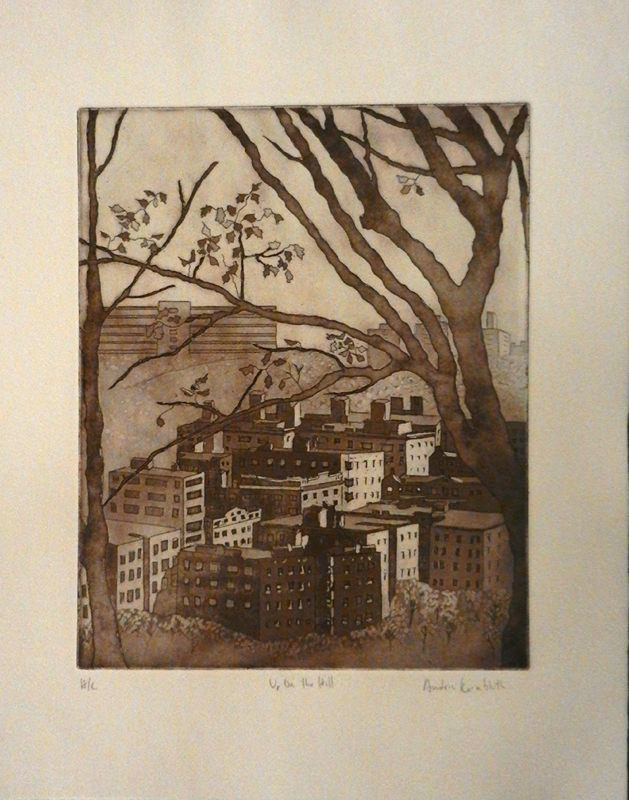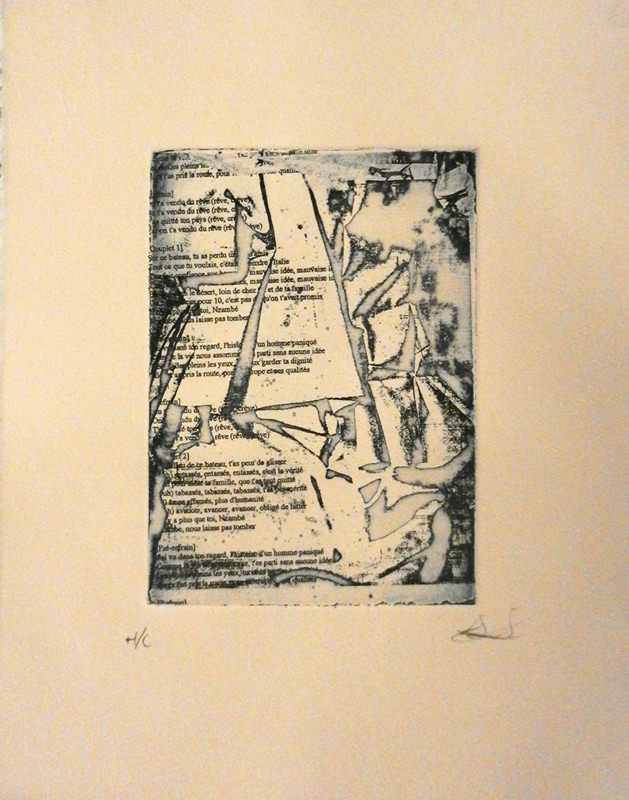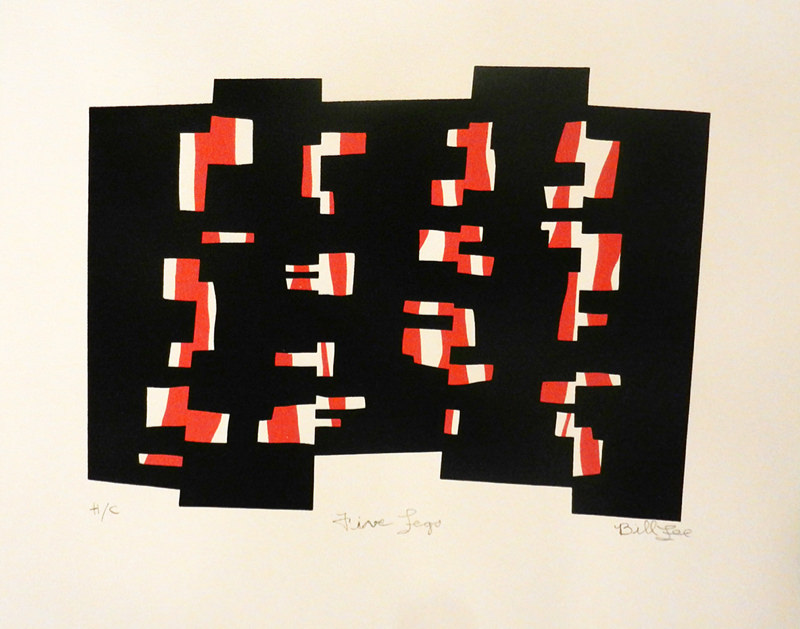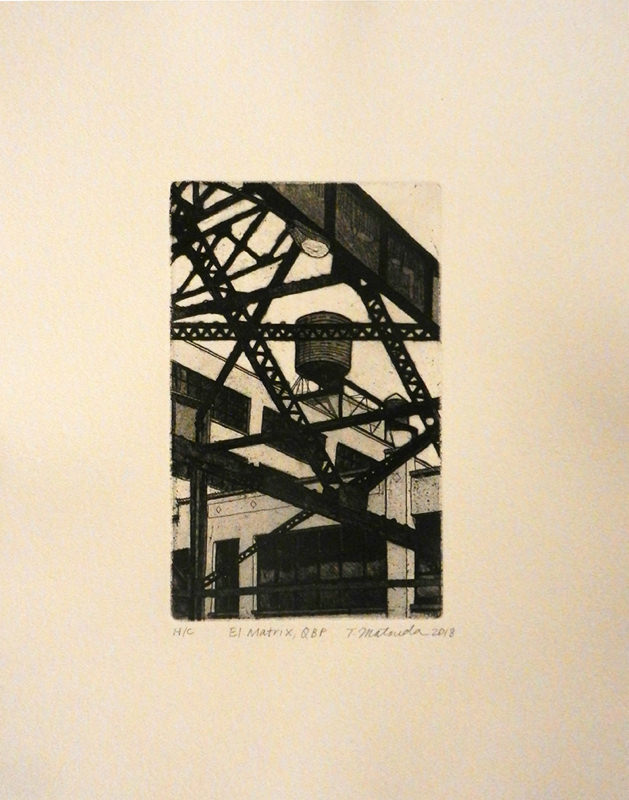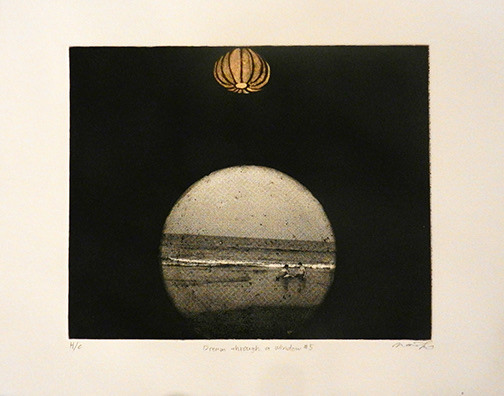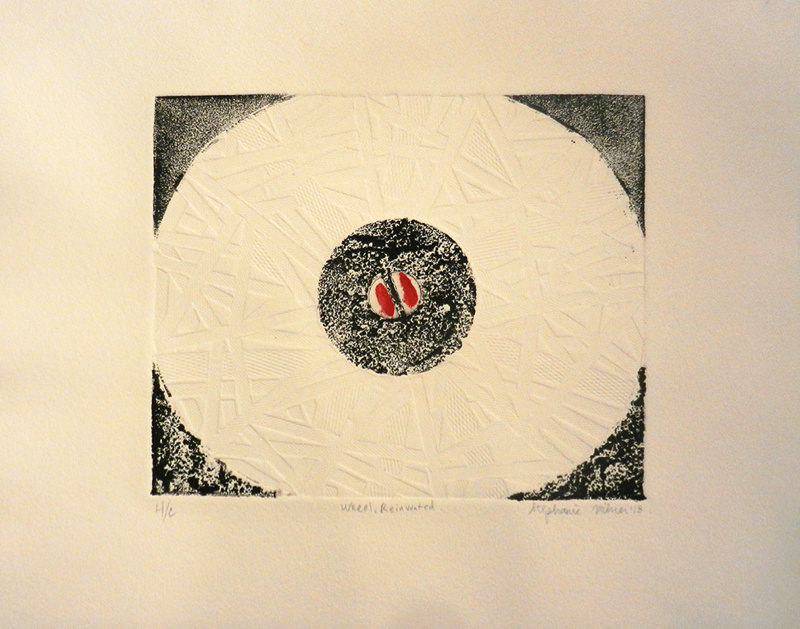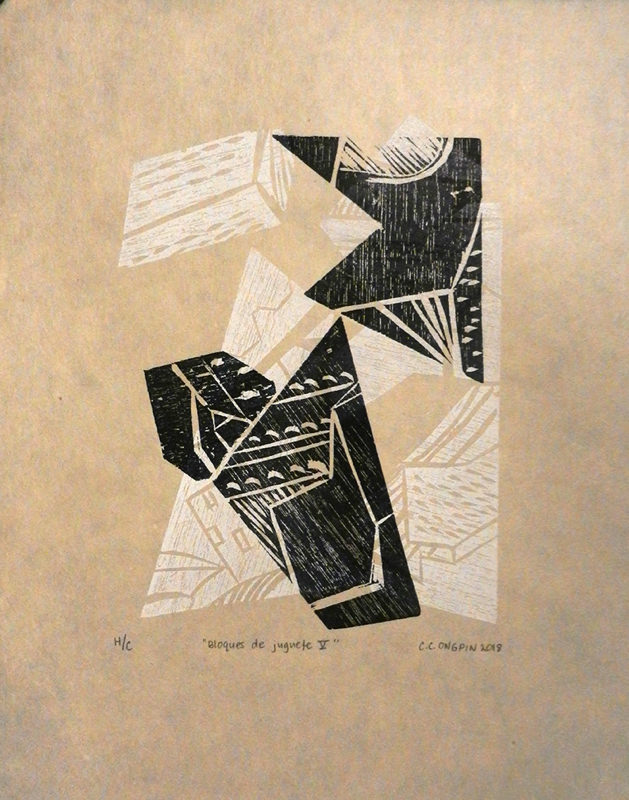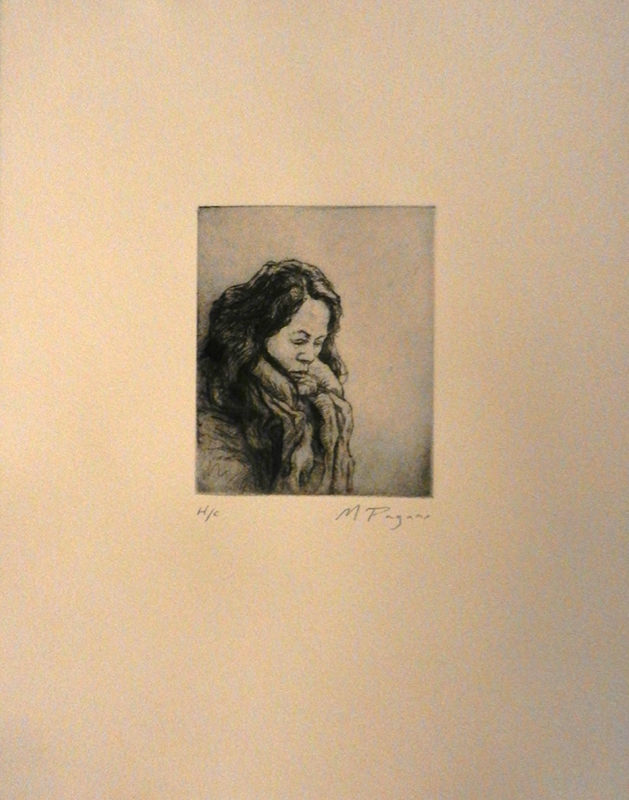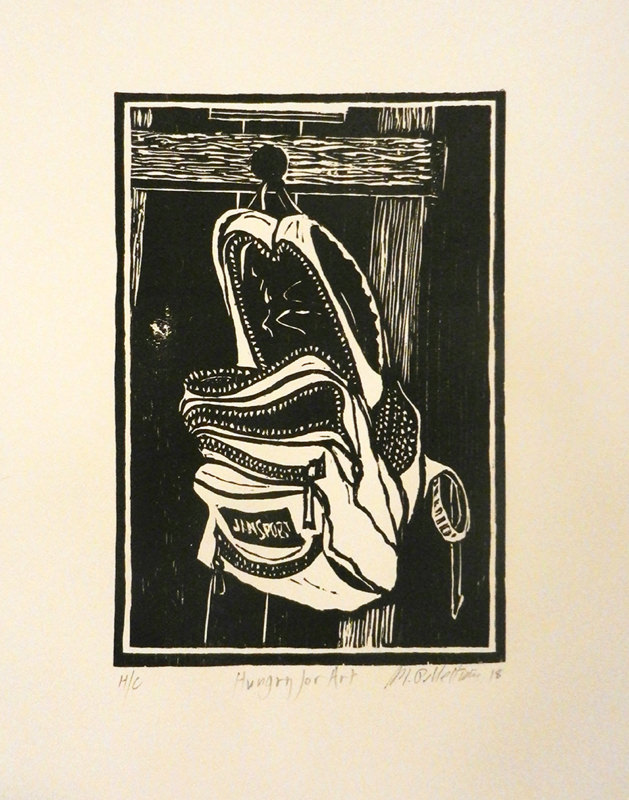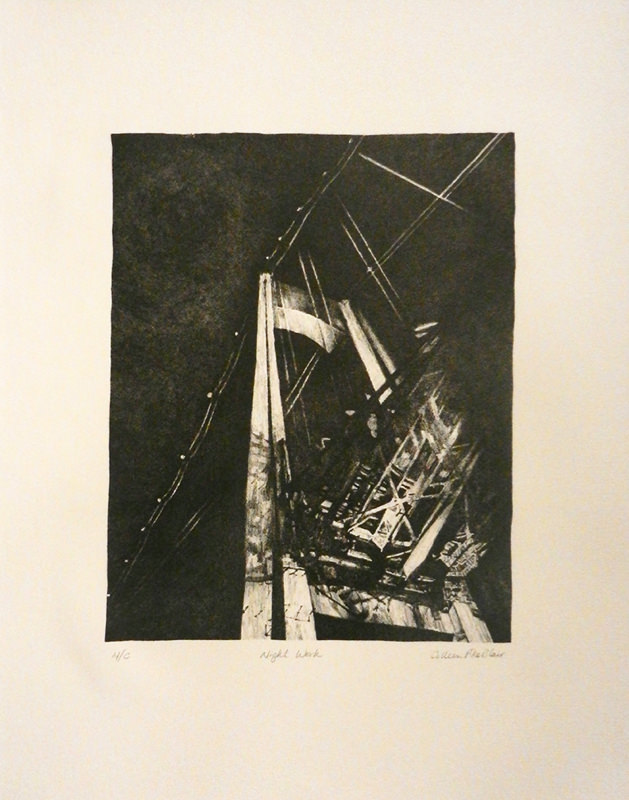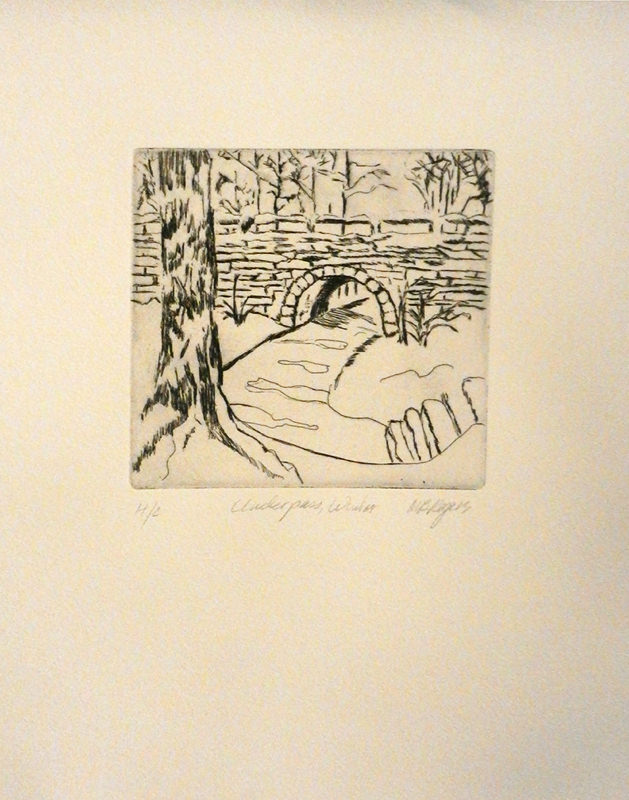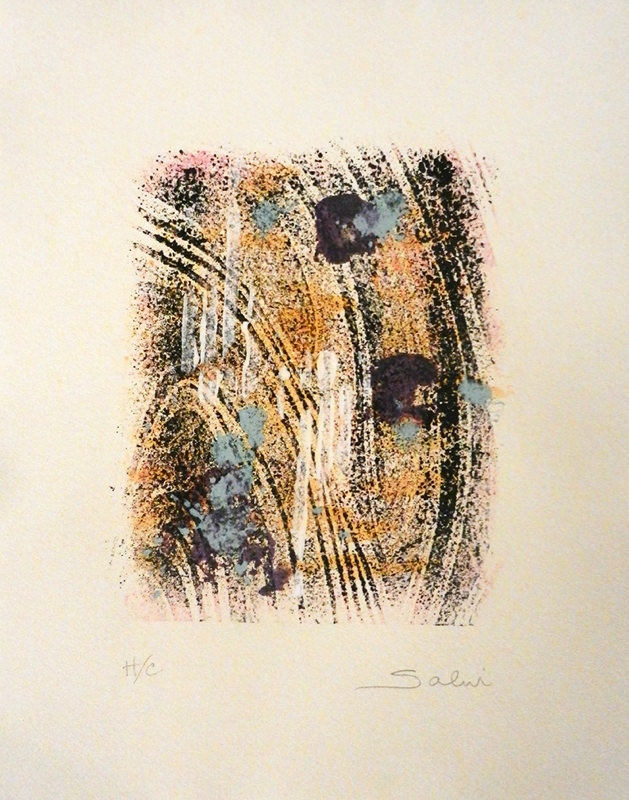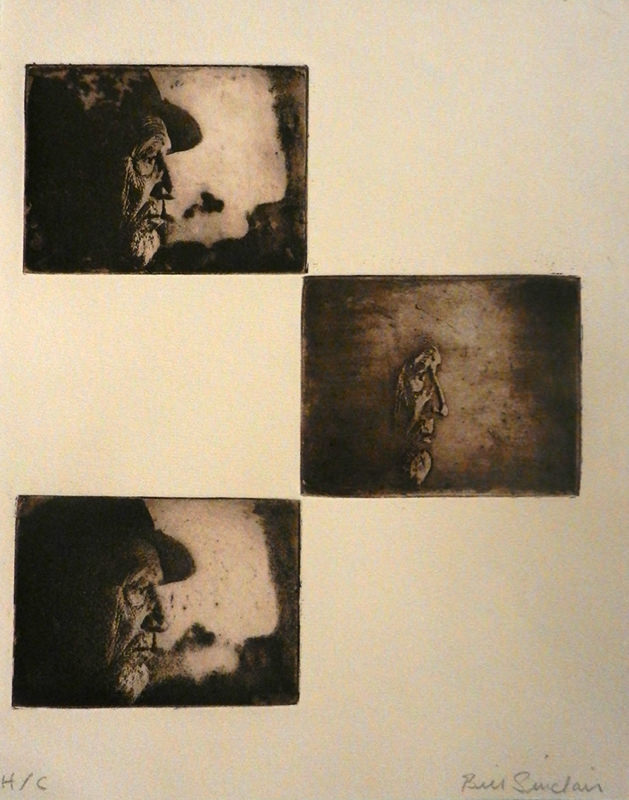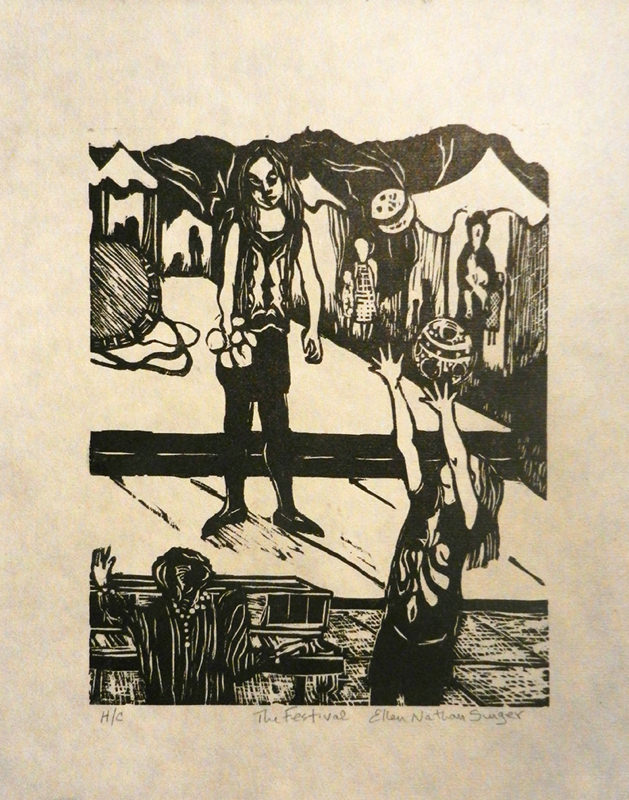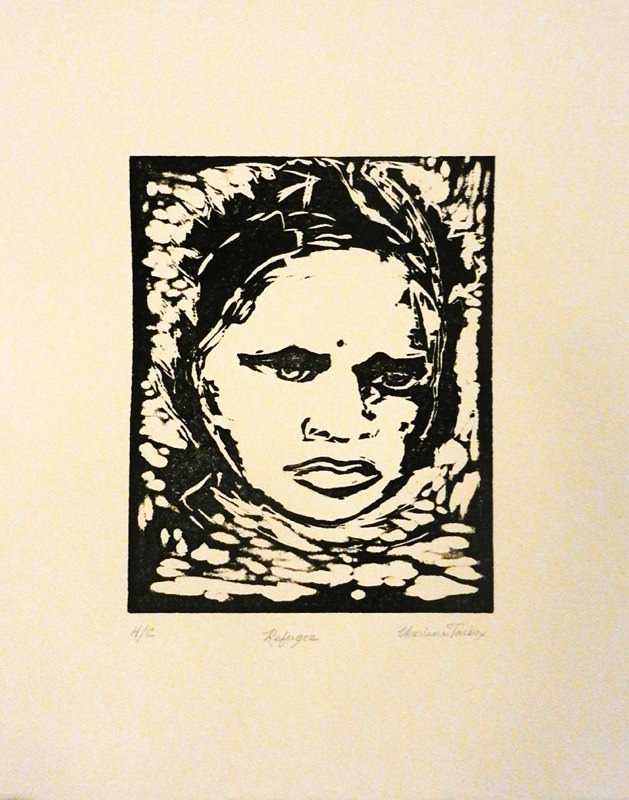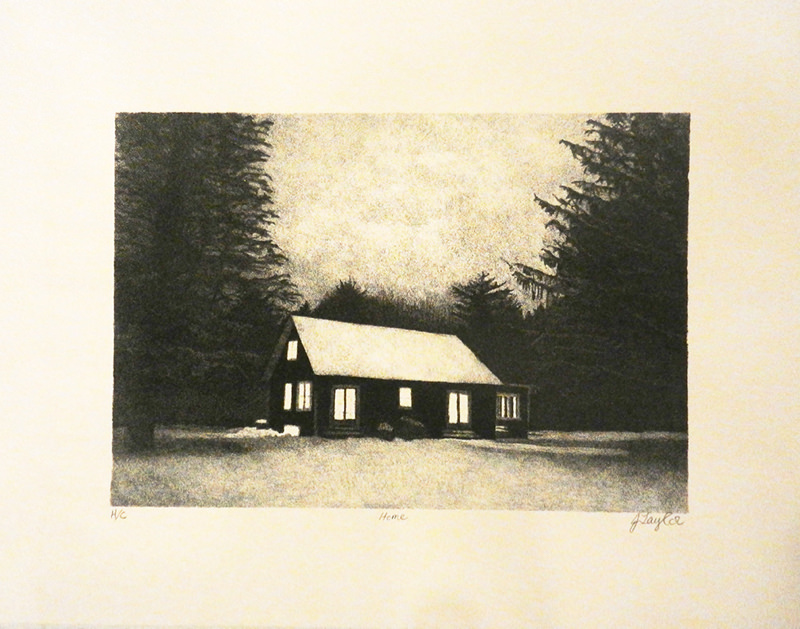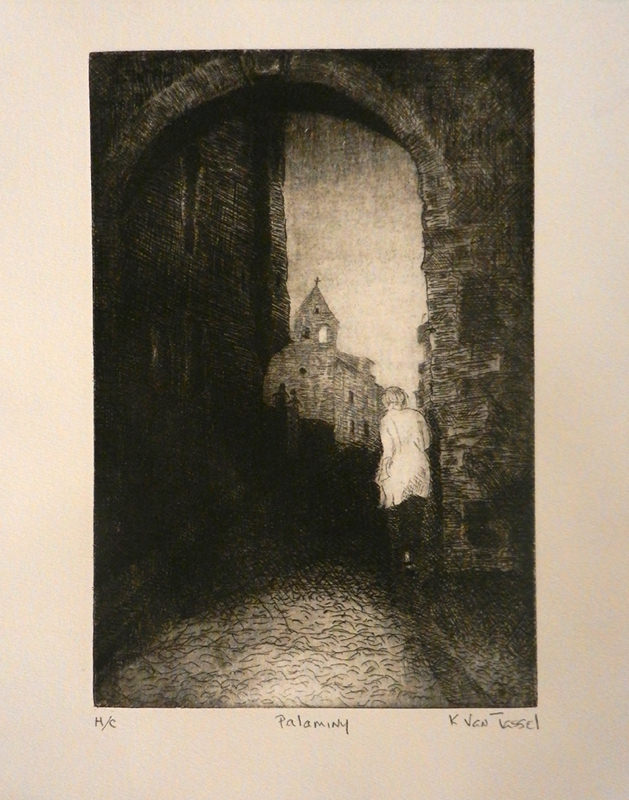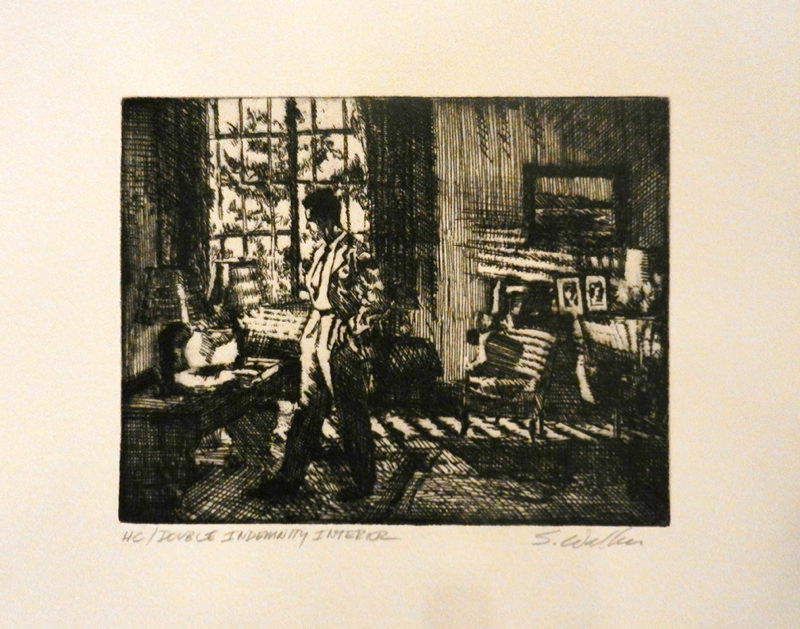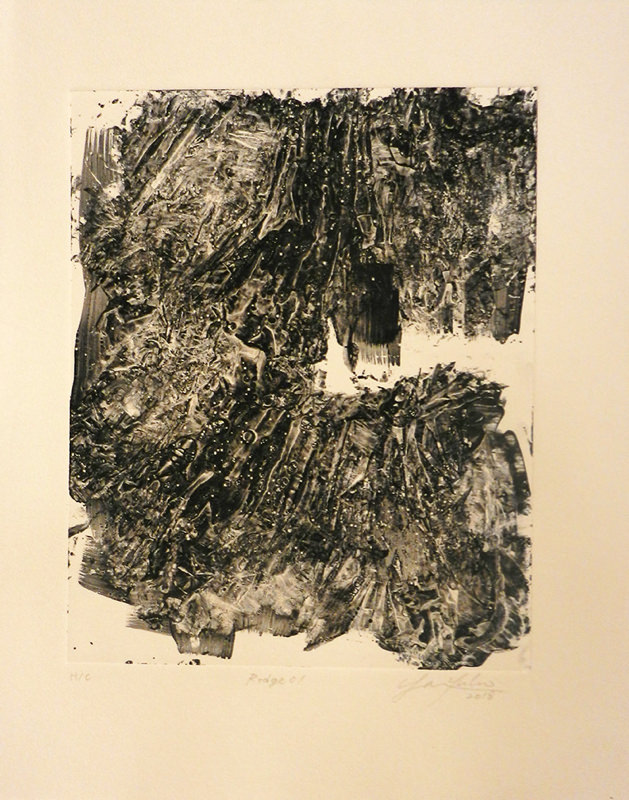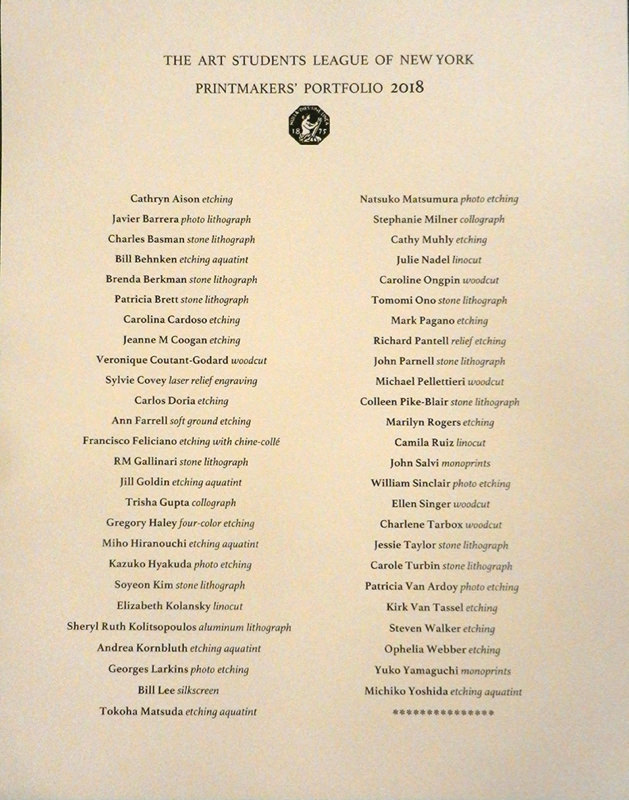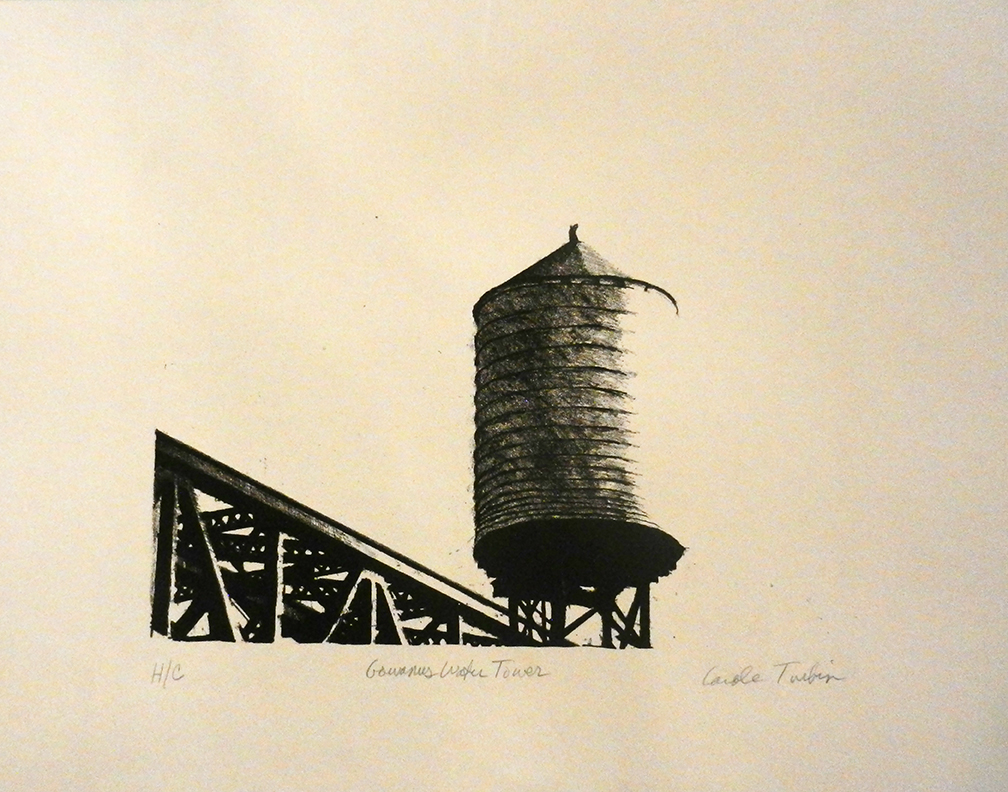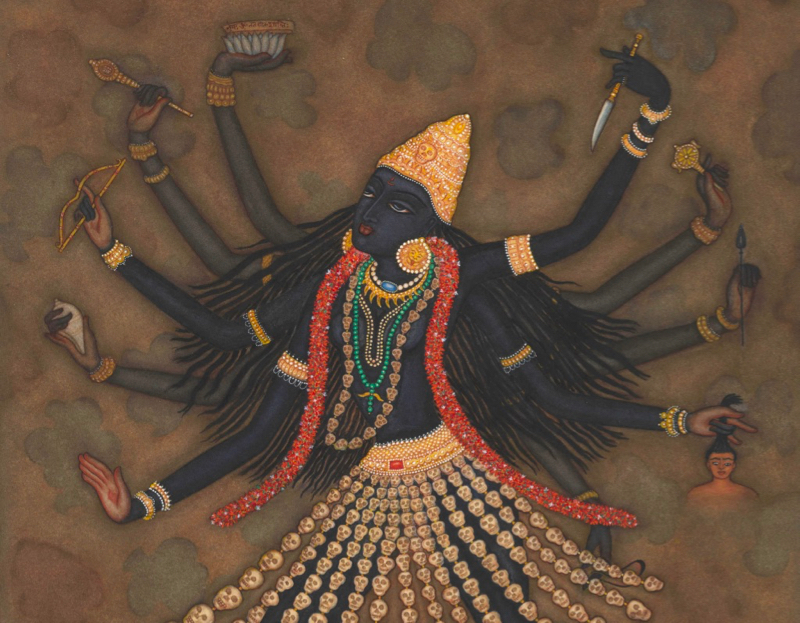
Michael Pellettieri
Sylvie, I recall that in Harry Sternberg’s class we exchanged prints with each other, but we never created a portfolio. Pat Van Ardoy recalls portfolio exchanges at the ASL back in the 80s. What inspired you to start the portfolio project in 2000?
Sylvie Covey
I did my first portfolio project in 1975, while studying printmaking at the École nationale supérieure des arts décoratifs in Paris, France. Later, after I enrolled in Michael Ponce de Leon’s class at the Art Students League and became his monitor, in 1978, I brought the concept of the portfolio project to his class.
A portfolio project begins with a group of printmakers who each pledge to create an image, print an edition, and share the prints. We decide on the same size paper. The number of prints in the edition depends on the number of participants. When all is done, the portfolios are assembled according to each of the numbered editions. We hold a lottery to decide who gets #1, 2, 3, etc., and each participant receives a portfolio of prints.
I stayed on as Michael Ponce de Leon’s monitor for seven years, and I organized several student portfolios with the participation of our instructor. They were smaller projects with twelve or fifteen participants.
When I became an instructor at the League in 1995, we did a few portfolios in my Saturday class. In 2000, for the Art Students League’s 125th anniversary, I thought it was time to open the portfolio project to other printmaking classes, and that is when you came in.
Michael, how were you able to arrange for that portfolio to be exhibited in a gallery on the Upper East Side?

MP: I had an appointment in the neighborhood and thought I would see if the gallery would be willing to exhibit the ASL Portfolio of 2000. The gallery’s new owner, Jim Horton, responded enthusiastically to the idea of presenting the prints as a holiday sale in December, and we started the process of ordering mat board and frames. The students responded with energy. We did everything: matting, framing, and delivery to the gallery.
The gallery gave us a nice opening. With over fifty artists and friends attending, the gallery felt we created a happening for them, and there were sales. Do you recall the portfolio the following year?
SC: In 2001, 9/11 happened. We were all in shock. The portfolio became a big project, and we had to limit participants to fifty. That portfolio was exhibited in several places.
MP: Yes, because of 9/11 and the exhibition we had organized the year before, the interest in the portfolio increased among students in the other classes. At first, we did not place a limit on the number of participants; when the list grew to more than sixty-five, people started to drop out. We ended up with fifty-five artists.
Rather spontaneously, students suggested other galleries where we could exhibit the prints. One student arranged a show with a gallery in New Jersey, while another found the Shoreline Gallery in Connecticut. There, one collector bought the entire portfolio. Another year GOGA Gallery gave us an exhibition during the Print Fair. The Art Students League and our portfolio exhibit were announced in the IFPDA publicity for Print Week.

MP: Michiko Yoshida arranged an exhibition in Osaka, Japan.
SC: Yes, Michiko invited me to accompany the exhibition. One of Michiko’s friends in Japan offered her an opportunity to have a show at a gallery in the Osaka Umeda Sky Building, which was owned by a Japanese construction company. They wanted to support the artists of New York after 9/11. The gallery was located at the top floor of the building within the so-called “Garden in the Sky.” That show, Message from New York, was a big success, and I was able to attend the opening party.
MP: Catch Sylvie missing a party!
SC: It was very exciting for me to be back in Japan for the opening reception in Osaka in 2001. I had lived in Japan for six months in 1976 while traveling the world, and I kept vivid and moving memories of that country.
One important result of our portfolio is that it united many artists from different backgrounds and cultures. The 2018 portfolio is no different; it comprises artists born in the Philippines, Africa, Belgium, France, Japan, Brazil, Canada, Colombia, Korea, and of course the United States. I found this mixture of cultures rich and inspiring.
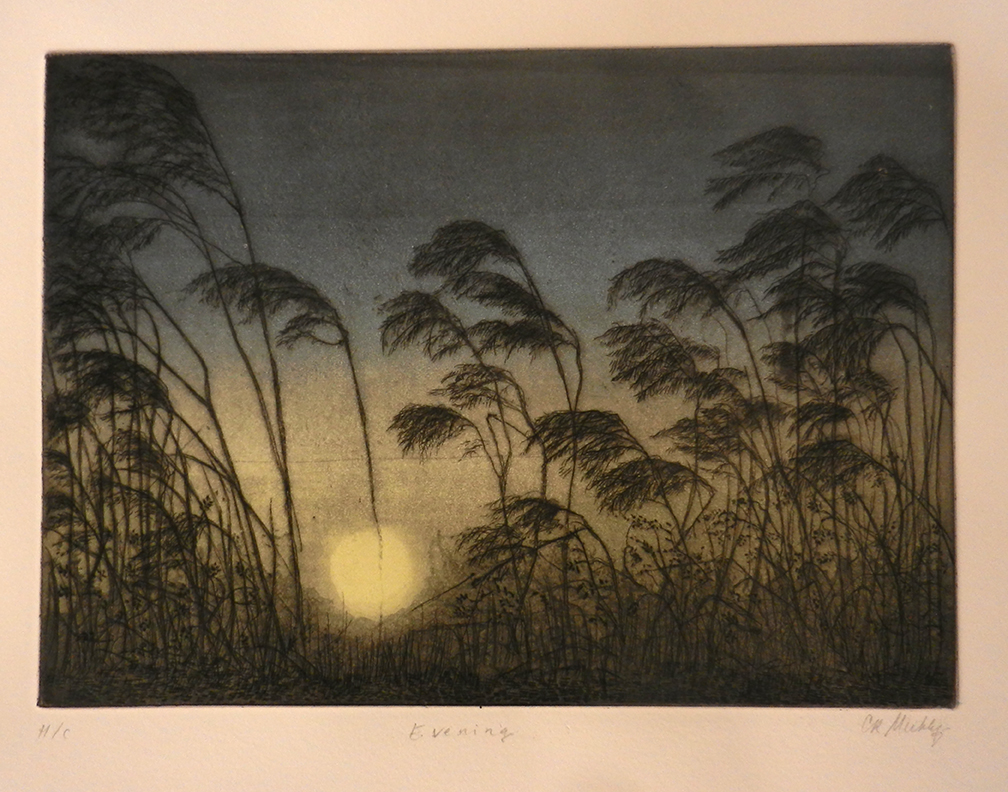
SC: You and I collaborated on several successful portfolios, the last before this year’s was 2005.
MP: The last one I participated in was 2004. My students as well as students from other classes continued to participate in 2005.
SC: Why did you suggest reviving the Portfolio project after all these years?
MP: I thought it was an excellent way to raise awareness of the print program at the League. We were also marking the American Fine Arts Society building’s 125th anniversary, and we were welcoming a new director.
SC: The 2018 Portfolio was met with great enthusiasm and success. It took a whole academic year to complete, from September to May! The project bore many good results. I have to thank you for introducing me to Robert Newman at the Old Print Shop many years ago, and for suggesting this year that we approach him regarding having a show of this portfolio. When I brought it to Robert back in May, he immediately agreed to give us an exhibition that summer. We also donated one copy of the portfolio to the permanent collection of the Art Students League. This was important for all the participants.
MP: We have to thank Robert Newman and the staff of the Old Print Shop for hosting our show and reception. Robert has been supportive of the League and the New York printmaking community. We also gave a gallery talk on the history of printmaking at the League and today’s printmaking techniques.
SC: And also thanks to Bill Behnken, who brought our portfolio to David G. Christie, a specialist in the Prints Division of the New York Public Library. All the participants now have a print in the permanent print collection of the New York Public Library.


